
Credit: NASA, ESA, CSA, and STScI
Clouds and cliffs. One of the most dramatic scenes unveiled in the telescope’s first image release, in July, was this sparkling landscape in the Carina Nebula, about 2,300 parsecs (7,600 light years) from Earth. The orange clouds consist of billowing gas and dust that are being shaped by ionizing radiation blasting from the stars above them. The James Webb Space Telescope (JWST) reveals 3D details such as the pillars and jets inside the dusty clouds, where newborn stars are taking shape. The telescope also peered through the obscuring clouds to reveal the individual stars and galaxies beyond.
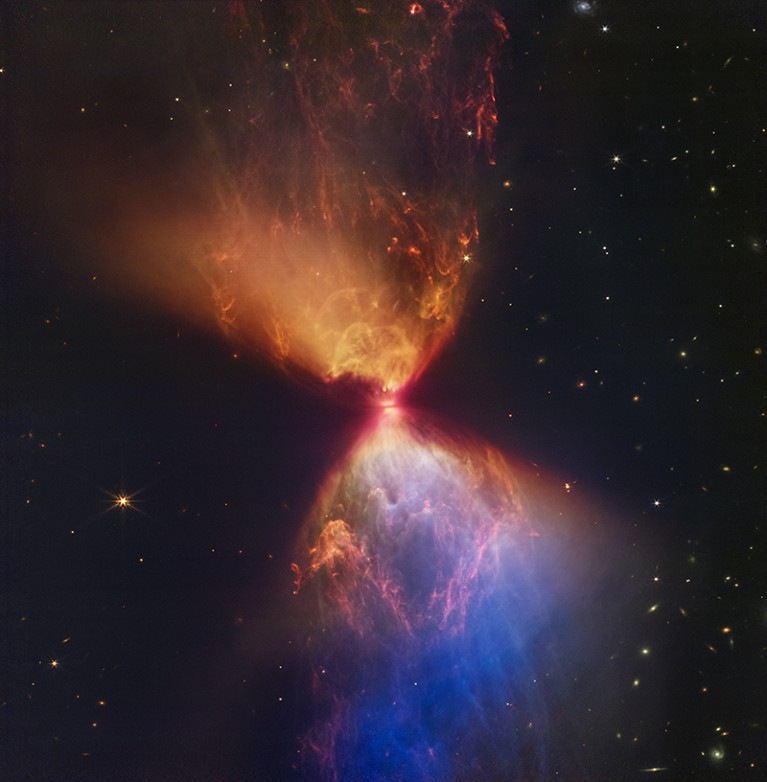
Credit: NASA, ESA, CSA, STScI
A star is born. Hidden at the centre of this blazing hourglass is a hot clump of gas that is on its way to forming a star. Known as L1527, it is only around 100,000 years old and will take some time to coalesce to the point of igniting nuclear fusion and becoming a full-grown star. Here, gas and dust are clumping together, forming an accretion disk that appears as a small black band at the centre of the image. The protostar embedded within illuminates clouds of gas and dust that blow outwards on either side, forming the hourglass shape. Blue represents areas where the dust is thinnest and orange those where it is thickest.

Credit: NASA, ESA, CSA, STScI
Spooky pillars. Towering fingers of interstellar dust reach into the cosmos in this view of the Pillars of Creation, a star-forming region in the Eagle Nebula. Reddish stars are visible at the ends of several pillars, their colours altered by the dust that still enshrouds them. Bluish stars embedded inside the clouds are those that have blown off most of their encapsulating dust. The scene lies 2,000 parsecs from Earth in the constellation Serpens.
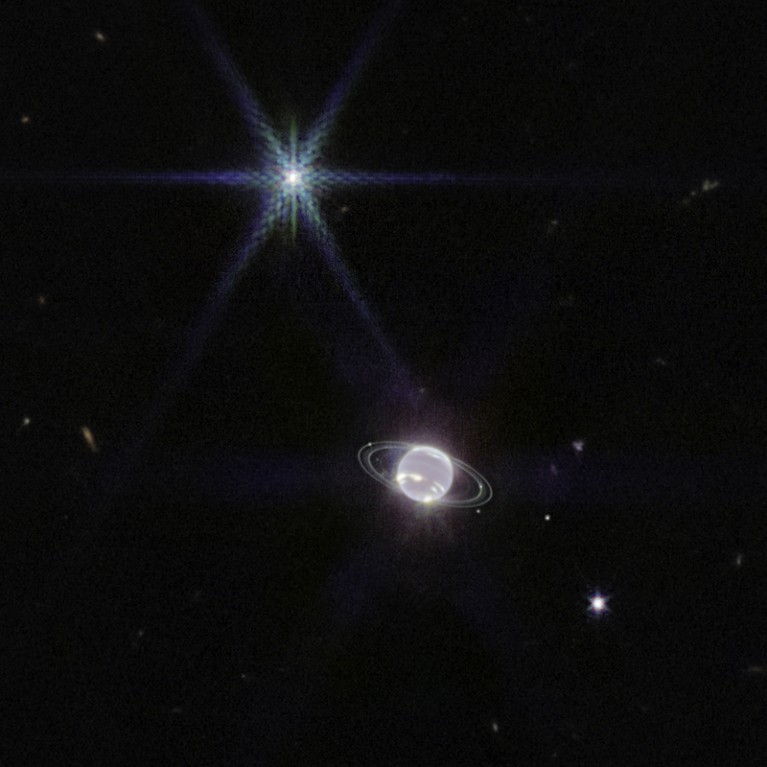
Credit: NASA, ESA, CSA, STScI
Ringed planet. The ice-giant planet Neptune takes on an otherworldly appearance as it floats near its unusual moon Triton (the bright object in the top left). Several narrow, bright rings encircle Neptune, and dust bands glow near the planet. The telescope’s infrared view unveiled details such as brightness near the planet’s north pole and clouds surrounding its southern polar vortex. Six other moons can be spotted close to Neptune and its rings.
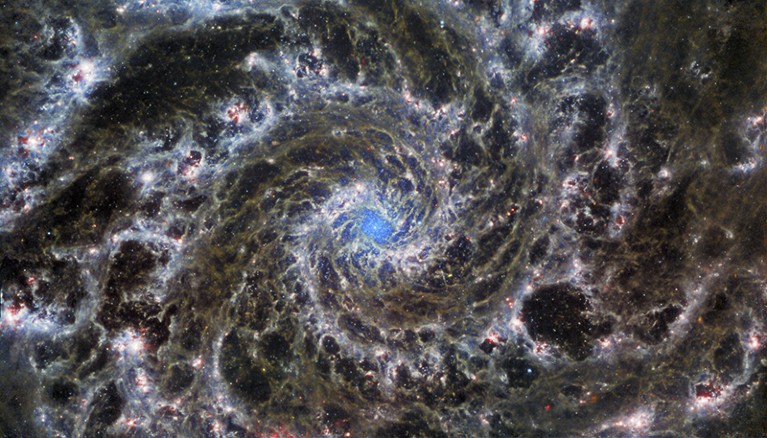
Credit: ESA/Webb, NASA & CSA, J. Lee and the PHANGS-JWST Team
Phantom spiral. The star-filled heart of the Phantom Galaxy lies 10 million parsecs away in the constellation Pisces. When viewed by the Hubble Space Telescope, the galaxy displays classic spiral arms winding outwards from its heart. Add in the infrared view by JWST (as seen here) and details emerge in the gas and dust of the spiral structure, with the star cluster at its core shimmering in blue.
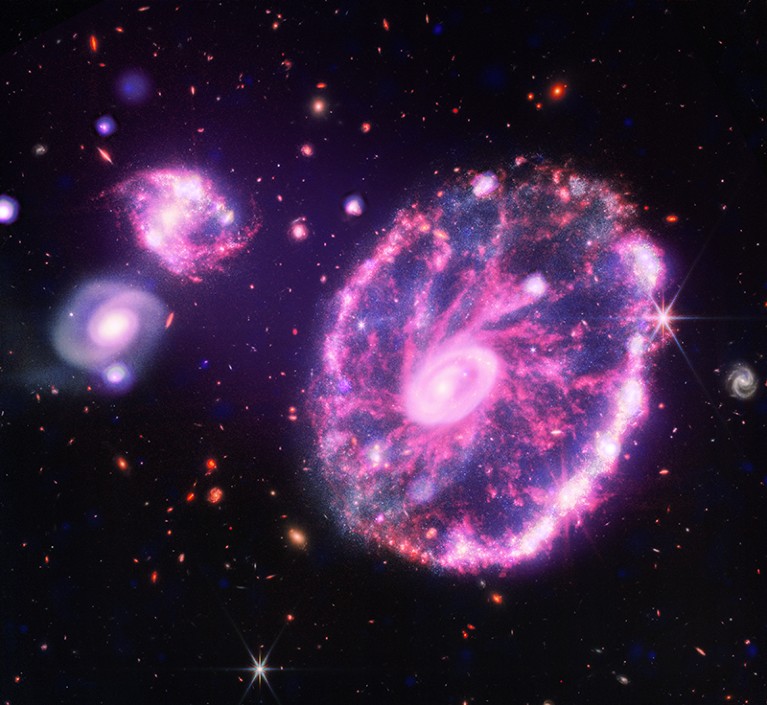
Credit: NASA/ESA/CSA/STScI
Cosmic cartwheel. Wheel-like spokes lead from a bright inner ring to a colourful outer ring in the Cartwheel Galaxy, which lies about 153 million parsecs away in the constellation Sculptor. This odd, glowing shape formed when a small galaxy slammed into a large spiral one, distorting its structure. JWST’s infrared vision was able to penetrate much of the dust that usually obscures the details. Young stars pop into view as blue dots, particularly in the spokes and the outer ring. Red represents areas rich in hydrocarbons and other compounds. Overlaid are X-ray data from NASA’s Chandra X-ray Observatory, mostly in purple, revealing superheated gas and other high-energy phenomena. To the left are two smaller companion galaxies.
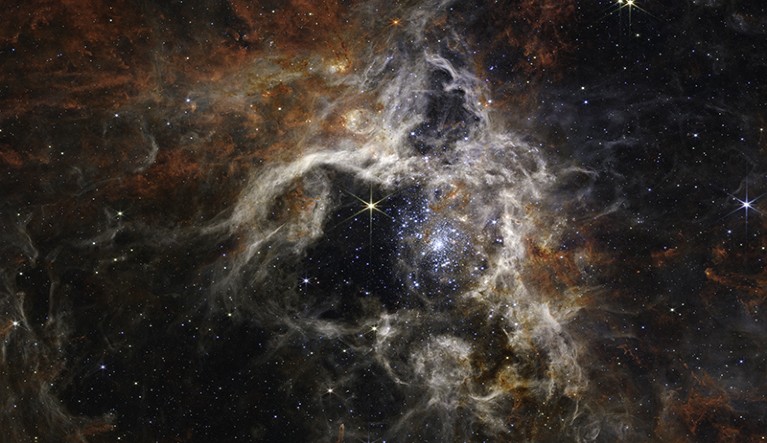
Credit: NASA, ESA, CSA, STScI, Webb ERO Production Team
Stellar nursery. Newborn stars sparkle in blue like an explosion of fireworks inside a cocoon of orange and white dust known as the Tarantula Nebula. This is the largest and brightest star-forming region in our galactic neighbourhood — home to the brightest and most massive stars known. Stellar winds blowing outwards from the young stars have cleared their spot inside the dusty cocoon; near the top left of the centre is a single older star radiating bright spikes, which are an observational artefact. The image spans about 110 parsecs.
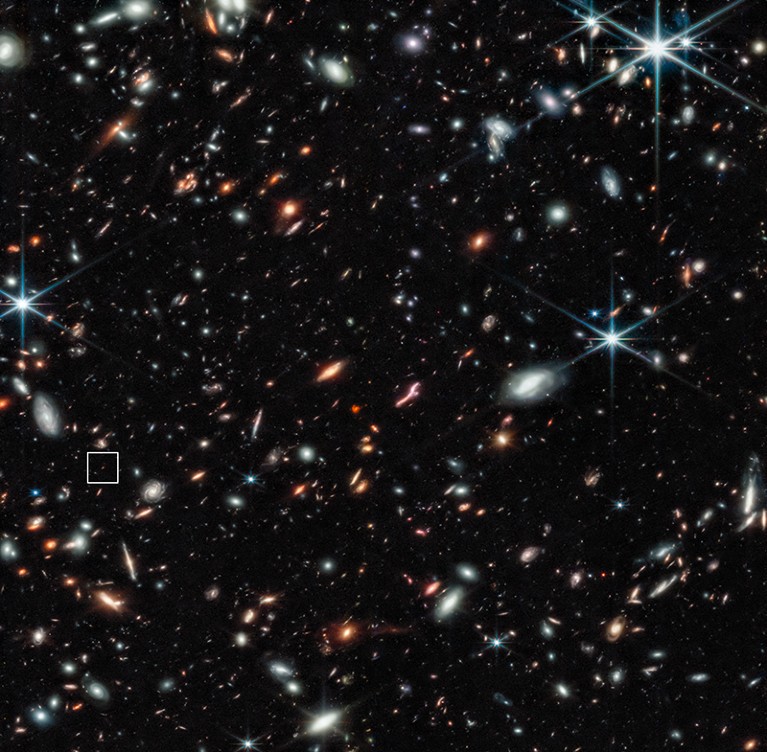
Credit: NASA, ESA, CSA, Tommaso Treu (UCLA)
Distant galaxies. Most of the galaxies in this image are part of a galactic pile-up known as Pandora’s Cluster, around 1 billion parsecs from Earth. But in the small box lies an extremely faint galaxy that is many billions of parsecs farther away. The dim red galaxy is on the shortlist of candidates for the most distant galaxy ever seen, a feat made possible only by JWST’s ability to see light from the faraway Universe that has been stretched into far-red wavelengths by cosmic expansion. The galaxy is seen as it was just 450 million years after the Big Bang.
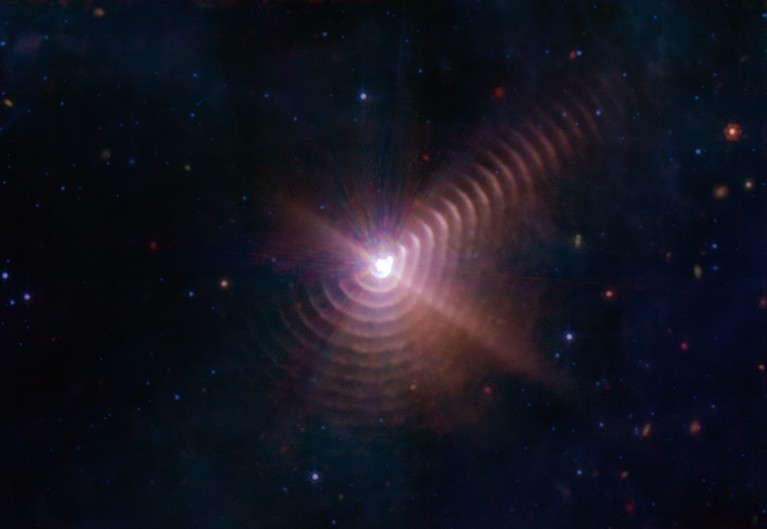
Credit: NASA, ESA, CSA, STScI, NASA-JPL, Caltech
Dusty rings. At least 17 rings of dust encircle a massive binary star known as WR 140, about 1,800 parsecs away in the constellation Cygnus. In this stellar system, two enormous stars orbit each other, coming together closely about once every eight years. During each close passage, the system belches another load of dust into space, creating concentric rings that drift outwards with time like the growth rings of a tree. JWST revealed more of these shells than astronomers had previously spotted.

